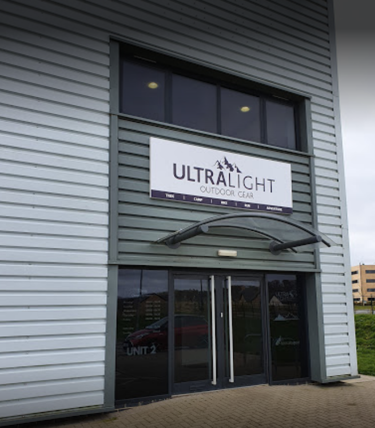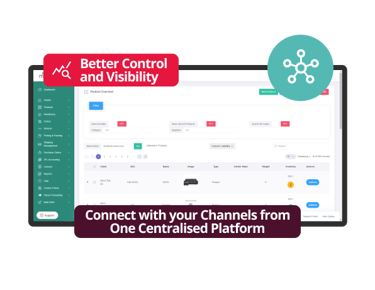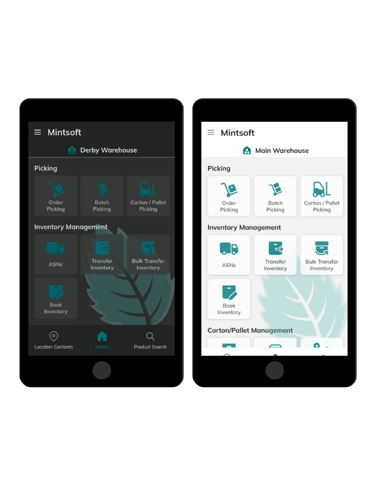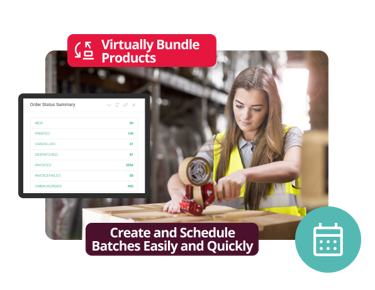Scalable Order Management Software that will transform your business
Our order management software helps you to deliver seamless sales interactions by automating processes, reducing costs and increasing efficiency, continuing to scale as your business grows.
Customer returns due to errors have decreased by 90%
Improving customer satisfaction was key for Ultralight Outdoor Gear - they were hoping to improve accuracy of picking orders, cut back on their order cut-off times as well as enhance the time of order processing.
Since implementing Mintsoft as their order processing software, they have seen a 90% drop in returns in terms of value. This level of savings essentially pays for the software itself - not to mention the increase in customer satisfaction.
“The software has paid for itself - our amount of refunds processed due to incorrect orders as a result of manual error have gone down by 90%.''

Popular integrations
Benefits of Mintsoft's OMS software
Book a free OMS demo today
Never miss an order with centralised processing
Mintsoft’s order management software removes the need to manually monitor your online stores for orders coming in, helping you to take control of the entire process

Get orders out both quickly and accurately
If you're processing hundreds (or even thousands) of orders a day, this can take up a lot of your time.
The Mintsoft platform is the best order management software in the UK and worldwide for order accuracy, ensuring products are picked in time and helping you to work towards delivery cut off times.

Mintsoft Mobile App
The Mintsoft Mobile app works seamlessly with the web-based platform to make updates to your inventory and pick orders on the go. With instant sync from the app to the platform, your stock data is always accurate.
Key functionality of the app includes:
- Managing Inbound Receipts & ASNs
- Mobile Order Picking
- Handling Stock Transfers
- Pallet ID Management
- Parcel Verification
- Light/Dark Modes & Voice-Assisted Picking

Simplify the management of complex orders
With Mintsoft's order management software, you can perform advanced actions on orders when they are imported, based on certain conditions. Our helpful order rules allow you to:

How our order management software helps customers
Order management software for warehouses, wholesale and retail
Whether you're a 3PL, fulfilment house or online retailer, our cloud-based order management software (OMS) will help you to pick, pack and ship your way to success, scaling effortlessly as your grow.
Mintsoft’s order management program helps you to drastically reduce errors and make informed, data driven decisions to deliver a more responsive and consistent service for your business or clients.
Learn more about Order Management Systems
Check out our complete guide to order management systems in 2024, including what an OMS is, how order management systems work, the benefits of using an OMS and how to choose the best order management system for your business.

Our cloud-based order management software will help you to pick, pack and ship your way to success.
Order Management Software FAQs
Get in touch today if you have more questions about our order management solution and features.
What is order management software?
Order management software helps to keep all tasks and processes involved with receiving an order manageable. The software will automate many tasks throughout the order process and help with back-office tasks such as email updates, tracking information, and delivery status alerts, freeing time to focus on other areas of the business. Order management software is regularly used by growing 3PLs and online retailers to enhance efficiency by improving the accuracy of orders.
Why is order management software important?
Consumers are likely to stop buying from a company if they are offered a poor customer experience. Automated software makes it easier to keep on top of orders and keep your customers in the loop by automating tracking updates, enhancing customer experience.
Cloud-based retail order management software also helps you to stay in control during peak shopping periods, such as pay day, Black Friday, or even a rainy summer’s day. Omnichannel inventory management is also made easy as you can automatically sync inventory levels. This makes overselling easily avoidable.
How much does order management software cost?
The amount you’ll spend on order management software depends on the size and needs of your business. Prices can vary from £159 a month for entry level businesses who only manage a small number of orders, to £1,149+ a month for businesses, such as 3PLs, dealing with a large number of orders.
Learn more about Mintsoft’s pricing plans.
When do you need to implement order management software?
Online retailers and 3PLs should consider adopting an OMS if they are looking to upscale their business as it will save them time and money in the long run. Another reason for implementation is if you have multiple stores, warehouses, sales channels and websites or marketplaces, as an order management solution will bring them all together into one place. As business grows, you can add customisation and extensions to make your OMS do what you need it to do as you scale.
Is Mintsoft a cloud-based order management software?
Yes, Mintsoft is a cloud-based order management software for the UK and worldwide. Cloud-based is better for users as all the software is hosted, protected and updated by us. Never again will you have to worry about upgrades, downloads or compatibility errors. Fully secured and always up to date, you can access the service from anywhere you can get an internet connection.
What is the best OMS system to use?
It is best to find a system that is built and supported by industry experts from E-commerce, logistics and warehouse management, such as Mintsoft. Read our guide to learn more about how to choose the best OMS.
How does software help with fulfilling orders?
Software can help automate processes within order fulfillment. This can reduce the number of errors, saving time on orders and reducing the number of delays. Learn how software can help you gain a competitive advantages with our order fulfillment guide.





























